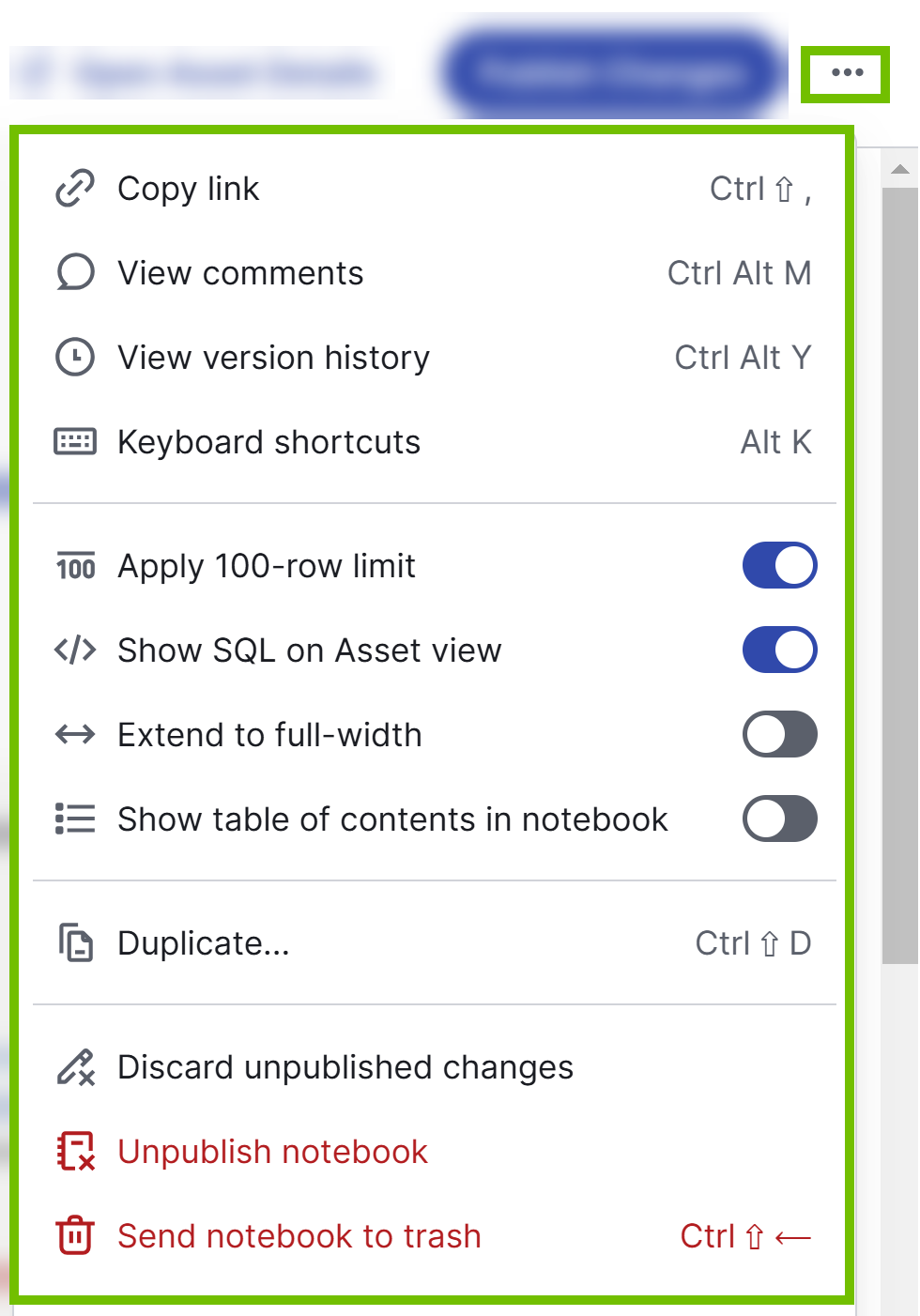Notebook options
The following table describes the options shown when you click ![]() in a notebook.
in a notebook.

| Option | Description |
|---|---|
| Copy link | Copies the link of the notebook to your clipboard for potential use later. This allows you to easily share the notebook with others. |
| View comments |
Shows a thread with all the comments that have been added to the notebook. This allows you to review feedback, collaborate with others, and address any questions or suggestions. |
| View version history |
Shows a list of all the versions of the notebook and allows you to restore an earlier version. |
| Keyboard shortcuts |
Shows a list of key combinations that you can use to perform various actions quickly, for example, running all queries at once, publishing the notebook, and formatting text. |
| Apply 100-row limit |
Returns only 100 rows of query results when a query is run. This helps reduce database load and improve readability by limiting the amount of data shown at once. By applying this limit, you can focus on a manageable subset of data, making it easier to analyze and work with the notebook. Tip
This option is enabled by default. |
| Show SQL on asset view |
Shows queries on the Notebook tab of the Data Notebook asset, which is created when the notebook is published. This option is enabled by default. |
| Extend to full-width |
Expands the notebook's interface to use the entire width of the screen. This allows you to view more content on each line, making it easier to work with wide tables or charts. This option is disabled by default. |
| Show table of contents in notebook |
Shows a structured outline of the headings in the notebook. This provides a quick overview and easy access to different parts of the content. This option is disabled by default. |
| Duplicate | Allows you to create an exact copy of the notebook. This helps you easily replicate the content for reuse or further development without altering the original notebook. |
| Discard unpublished changes |
Allows you to revert the notebook to its last published state, removing any changes that haven't been published. This helps you avoid unintentional modifications and maintain the integrity of your notebook. This option is shown only in a published notebook in which you have made changes. |
| Unpublish notebook |
Allows you to remove the notebook from public view. This helps you control access to the content and make updates or corrections as needed. This option is shown only in a published notebook. |
| Send notebook to trash | Allows you to move a notebook to the trash, where it can be permanently deleted or restored later. This helps you manage and organize notebooks by removing unnecessary or outdated content. By sending a notebook to the trash, you can declutter your workspace while still retaining the option to recover it if needed. |